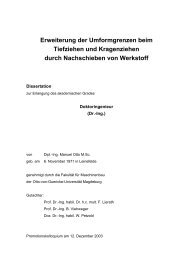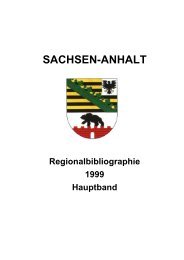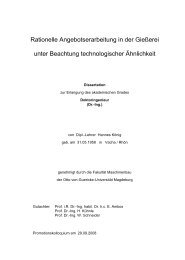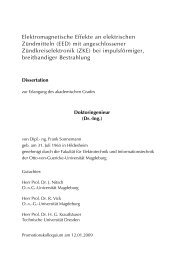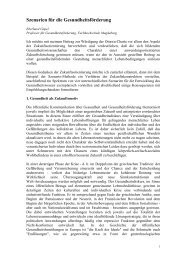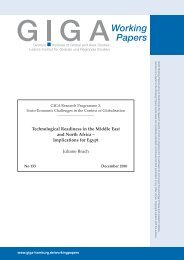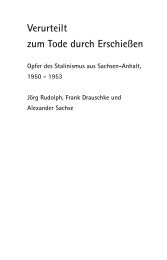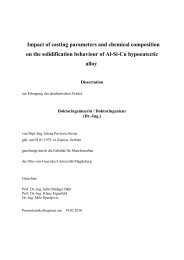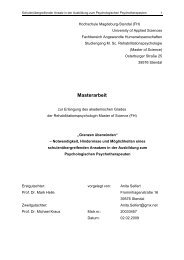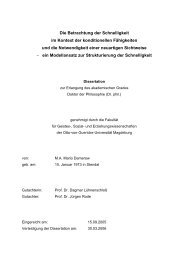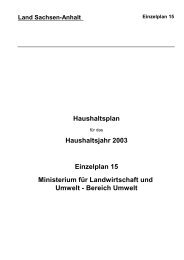Chapter 1
Chapter 1
Chapter 1
Create successful ePaper yourself
Turn your PDF publications into a flip-book with our unique Google optimized e-Paper software.
TABLE 4.2 crisis brought about an 7.6 percent real GDP growth rate in<br />
Sectoral share In GDP at market price 1992, led by an impressive 24.1 percent growth rate in the<br />
(Percent) tourism sector. The vulnerability of the Tunisian economy to<br />
198346 1987-94 external conditions will be minimized as the structure of<br />
Agriculture and flshing 13.85 14.68 production becomes more diversified and domestic relative<br />
Agriculture 13.16 13.92 prices (which still face some controls) and wages (which,<br />
Fishing 0.69 0.60<br />
Industry 32.31 29.23 given the current labor legislation, are rather rigid) become<br />
Industry, excluding fuel 20.23 23.03 sufficiently flexible to accommodate sectoral demand and<br />
Manufacturing 14.97 16.77<br />
Agroindustry 3.90 3.64 supply shifts.<br />
Construction maerials<br />
Machinery<br />
2.02<br />
2.45<br />
1.89<br />
2.36 Structural reforms and growth<br />
Chemicals 1.03 1.58<br />
Textiles 3.64 5.06<br />
Other 1.94 2.25 By the mid-1980s, a series of professional journal articles<br />
Nonmanufactunng<br />
Mining,aeturing u17.1<br />
Minig, exduding fuel<br />
Fuel<br />
17.34<br />
I .10<br />
8.67<br />
12.47<br />
0.89<br />
0.89<br />
5.52<br />
revived the academic interest in economic growth as a subject<br />
for both theoretical and empirical research. Although<br />
Gas and electrcity 1.44 1.42 this subject has always been of prime interest to policy mak-<br />
Water<br />
Construction<br />
0.73<br />
5.40<br />
0.62<br />
4.00 ers, the "new growth literature" is giving them a fresh and<br />
Total services 44.17 46.83 more accurate perspective on the kinds of policies and<br />
Transport and communication<br />
Tourism (hotel, cafe)<br />
6.39<br />
4.40<br />
7.23<br />
5.24 reforms that best promote economic growth.<br />
Financial services 3.36 3.47<br />
Commerce 8.28 8.79 The determinants of economic growth<br />
Other 8.31 8.74<br />
Govemment services 13.44 13.37<br />
Adjustment factor 3.57 3.24 In their contributions to the new growth literature, promi-<br />
GDP atfactor cost<br />
Net indirect taxes<br />
86.76<br />
13.24<br />
87.51<br />
12.49 nent economists explai how long-run growth IS enhanced<br />
GDP at market prices 100.00 100.00 by socioeconomic developments and government policies.<br />
Source: Ministry of Economic Development. The following is a list of some of the most important contributions<br />
to this literature. Paul Romer (1986, 1990) points<br />
The Tunisian economy, however, was subjected to large out the importance of technological research and developfluctuations<br />
mainly due to sudden changes in agricultural ment; Robert Lucas (1988) emphasizes the role of human<br />
production (which in turn depended heavily on weather<br />
conditions) and to a lesser extent due to shifts in external<br />
capital formation; Robert Barro (1990) highlights the<br />
demand for Tunisian goods and services, particularly FIGURE 4.1<br />
tourism (figure 4.1). The effect of weather conditions on<br />
output growth is clearly seen in 1988, when a severe drought<br />
caused agricultural output to decrease by 30 percent, which<br />
Standard deviation<br />
1983-94<br />
of the annual growth rate,<br />
Percent<br />
in turn led real GDP to virtually zero growth. In 1990, when 8<br />
weather conditions markedly improved, agricultural pro- 6<br />
duction and real GDP grew strongly (by 32.2 percent and 1 4<br />
7.3 percent, respectively). Agricultural production will 1 2<br />
remain strongly dependent on weather conditions as long as a 0<br />
irrigated agriculture covers only a small fraction of arable 6<br />
land (currently 6 percent). By affecting the demand for 4<br />
Tunisian exports, the Gulf crisis was also an important cause 2<br />
of output variability during the early 1990s; after a fall in the Aiure Manu(aunng Servediudg Tiprkc GDPatre<br />
real GDP growth rate to 4.1 percent and a contraction of EPIC<br />
the tourism sector by 15.2 percent in 1991, the end of the Soure: World Bank caculations; data from Ministry of Economic Development.<br />
46 TUNisIS GLOaAL INTEGRAnON AND SUSTAINABLE DEVELOPMENT' STRATEGIC CHOICES FOR THE 21ST CENTURY




